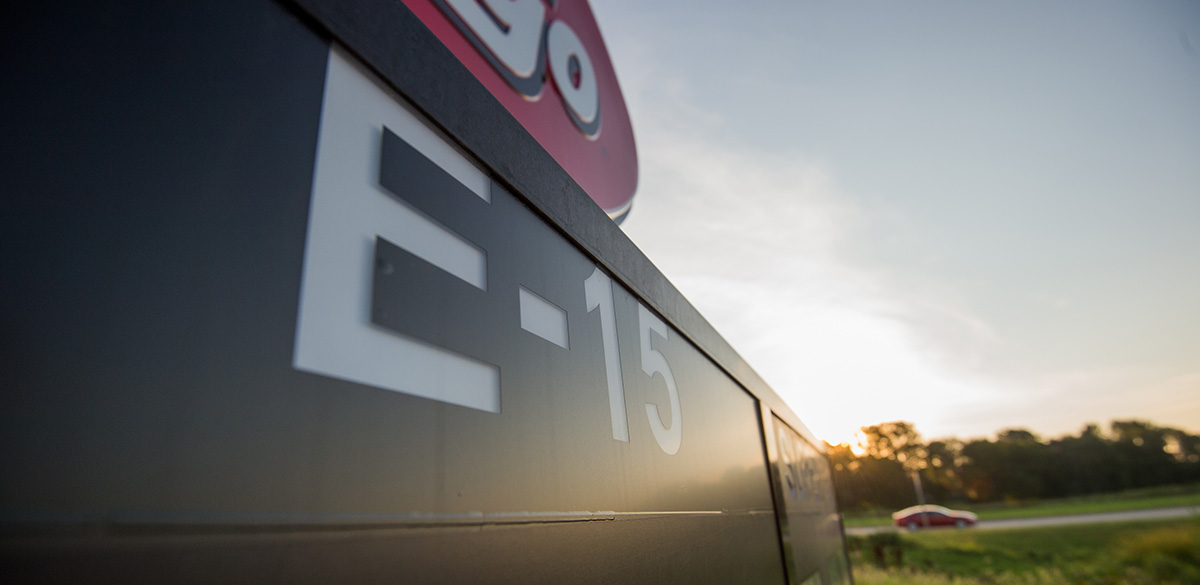The arrival of summer in Washington is typically marked by growing legions of tourists zipping along on Segways and a seemingly constant need to take shelter from sudden rainstorms better suited to the tropics. In the fuel business, because of one antiquated rule, the transition to summer is much more abrupt — and much less welcome. If not resolved, it could mean one thing evading the rest of the country is a cleaner, less expensive fuel option.
Every June 1, gas station owners must re-engineer their product offerings to accommodate a decades-old Environmental Protection Agency regulation that limits sales of E15, a fuel blend containing 15 percent homegrown, low-emission ethanol. The prohibition lasts until Sept. 15, and represents one of the greatest barriers to growth in America’s renewable energy industry. It also costs retailers millions of dollars to navigate the switch, and it forces E15 customers to buy less-appealing fuels for 5 to 10 cents more per gallon. Those costs can add up quickly during the summer driving season when prices are already above the norm.
In practice, the rule — a limit on Reid vapor pressure — was designed to hold down the evaporation of toxic petroleum-based chemicals during the warm summer months. But, because RVP limits were set years before higher ethanol blends were part of the calculation, the obsolete rule now forces retailers to offer less earth-friendly options at the pump for more than three months each year.
Fixing this technical glitch would be fairly simple, and even EPA Administrator Scott Pruitt has expressed his hope for a solution, but only an act of Congress can keep E15 beyond the reach of oil industry lawyers looking hold back any competition at the gas pump.
To overcome the opposition, Sens. Deb Fischer (R-Neb.), Joe Donnelly (D-Ind.), and Chuck Grassley (R-Iowa) brought together a broad, bipartisan coalition of lawmakers to introduce the Consumer and Fuel Retailer Choice Act, S. 517.
During a recent hearing of the Senate Committee on Environment and Public Works, Brooke Colman with the Advanced Biofuels Business Council testified that new markets for homegrown fuel are vital to attracting investment dollars and “critical to first-movers in commercial cellulosic ethanol production.” His point was reinforced in a letter from POET and dozens of other leaders in second-generation biofuels who noted that, “during the summer months alone E15 can reduce GHGs equivalent to taking 2.1 million vehicles off the road.”
A top executive from the nation’s largest E15 retailer, Sheetz, also explained to committee members that the fix would simply allow “greater consumer access for a fuel that is lower cost, higher performing, and better for the environment.”
And Janet Yanowitz at Ecoengineering Inc. summed up the science for committee members, reporting that “the available emissions test data indicates that replacing E10 with an E15 of the same vapor pressure will cause a slight decrease in emissions of ozone forming organic compounds and carbon monoxide, and no change in NOx.” Meanwhile, the U.S. Department of Agriculture, reported this year that homegrown ethanol reduces carbon emissions by 43 percent compared to gasoline, a number that continues to grow as petroleum production relies on increasingly destructive extraction methods. And if those carbon savings aren’t enough, the cellulosic ethanol produced at plants like POET’s Project Liberty can slash emissions by 85 to 95 percent or more. To be clear, cellulosic biofuels are the future of our industry and our company, but we need market headroom to scale up advanced energy sources.
The only real opposition comes from a few oil company executives who think that holding consumer choice hostage is a good way to force pro-biofuel lawmakers to negotiate with refinery owners such as Carl Icahn. They are even dusting off an old oil-funded study by the Coordinating Research Council, which claimed that E15 damaged engines, but was immediately rejected by the Department of Energy, which pointed out that the report was “significantly flawed” and relied on “unreliable and incomplete data.” No surprise then that legitimate testing by the DOE of 86 vehicles operated up to 120,000 miles each found “no statistically significant loss of vehicle performance.” In fact, the EPA approves E15 for all passenger vehicles built since 2001. And because E15 offers higher-octane, a lower cost, and cleaner air, it’s quickly gaining popularity among consumers in 29 states and counting.
That progress could be accelerated, and all it will take is a simple, bipartisan fix to one outdated summer fuel regulation. It’s time to act. Cleaner, less costly fuel is a goal that everyone can agree on, and we urge the Senate Committee on Environment and Public Works to act quickly to fulfill the promise of America’s growing biofuel industry and open a market that will continue to drive investment in the next generation of low-carbon fuels.
Robert Walther is vice president of federal affairs for POET.







